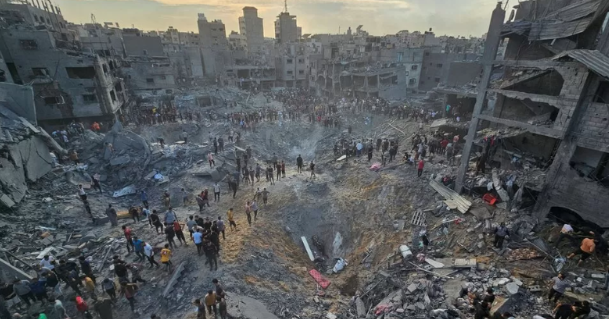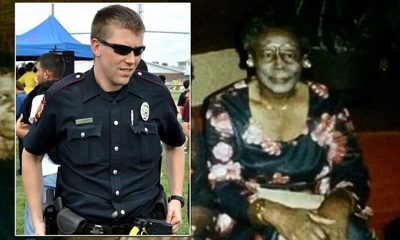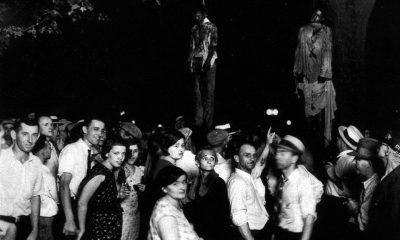Israel
Siege in Gaza: Anatomy of the Israel War | Beneath the Rubble

Siege in Gaza: Anatomy of the Israel War
In the chill of the December air, the relentless cacophony of the Israel war once again besieges the battered landscape of Gaza, echoing the grim resolve of Prime Minister Benjamin Netanyahu’s campaign against Hamas. The recent crescendo of violence has rendered the nights alight with artillery, painting a stark tableau of conflict where peace is as elusive as the horizon beneath the smoke.
Netanyahu’s unyielding strategy, bent on dismantling the militant footholds and reclaiming Israeli lives held in the shadows, has led the Israeli Defense Forces to the gates of Gaza City, a threshold that, if crossed, may plunge soldiers and citizens alike into the maelstrom of urban warfare. It’s within this harsh realm of iron and fire that the narrative of the region is being written in the blood of its people, challenging the world to ponder if the relentless cycle of aggression and retribution will ever yield to the desperate yearnings for peace.
The seed of today’s discord was sown long before the present belligerents walked the earth. The region’s tapestry is woven with threads of ancient grievances and modern warfare, its pattern a complex mosaic of political ambition, land, and identity. The echo of the 1948 Arab-Israeli war and the territories it rendered contested has reverberated through decades, culminating in the complex political and military standing of Hamas, which Israel, the United States, and the European Union have designated as a terrorist organization. Their entrenched control over Gaza since 2007 stands as a testament to the unresolved Palestinian question and the unyielding cycle of siege and retaliation that defines the region.
In the grim penumbra of the IDF’s advances, a ledger of human loss is etched with the unfeeling precision of war. The toll is recounted not just in the cold metrics of the dead, wounded, and the disappeared, but in the myriad stories of those left behind. The relentless calculus of bombardment has indiscriminately apportioned fate, leaving thousands to navigate the capricious line between life and death. Jabalia, once a tapestry of tightly knit communities, now lies in ruin, its very soil holding the memories of those lost. Families there grope through the detritus of existence, their homes and histories now indistinguishable rubble.
Within the precarious embrace of Gaza City’s Al-Quds Hospital, the air is heavy with decisions that weigh survival against a semblance of safety. Here, the ill and injured are flanked by tireless caregivers, each wrestling with an impossible choice: abandon the tenuous refuge of these walls, or stand fast against the specter of impending violence. The stories of resilience are whispered in these corridors—tales not of the unbroken, but of those pieced together by courage and the shared humanity that pain brings. In the chaos, Gazans forge survival with the alchemy of hope and resolve, each day sculpting a life of fortitude from the ruins of yesterday.
The military engagement unfolding in Gaza is not merely a physical confrontation but a battle of narratives, each wielding its own version of the truth. Netanyahu’s assertion of Hamas’s dismantlement as the operation’s goal is matched by the grim resilience of the organization’s fighters and their vast tunnel networks that have, for Israel, become synonymous with a hydra-headed threat. Yet, the IDF’s penetration into Gaza’s urban heart raises profound questions about the proportionality of their response and the toll on civilian life, laying bare the stark asymmetry in military might.
One cannot observe the unfolding carnage without questioning the cost of such endeavors. As Netanyahu rejects ceasefires and the IDF lays claim to tactical victories, there is a gnawing sense that in the arithmetic of war, the ledger is kept not in the currency of strategic gains but in the ink of human blood. The narrative that emerges from official channels often wears the guise of decisiveness and necessary action, yet one must ask at what point defense transmutes into offense, protection into annihilation.
The nights in Gaza no longer belong to the quiet contemplation of stars but to the cruel luminescence of flares and explosions. The sound of a child’s laughter has been supplanted by the wails of sirens and the thunderous collapse of buildings. The air, once laden with the scent of the sea, now carries the choking dust of concrete and the coppery tang of spilled blood. And beyond the confines of Gaza, the borders bristle with the machinery of war, tanks and troops amassed with the grim expectation of conflict, ready to etch new lines of sorrow on the land.
As the siege grinds on, it is not merely the landscape of Gaza that is reshaped, but the contours of human conscience. The IDF’s casualty figures and the toll on Hamas’s ranks will be tallied, and the geopolitical pundits will analyze the shifts in power and policy. Yet, the most profound reckoning is that of the human cost—lives snuffed out, dreams buried under rubble, and the unending lament for peace in a land where olive trees are uprooted by the roots of conflict. What lessons will we draw from this latest conflagration?
And will the world, once the dust settles and the dead are mourned, finally heed the cry for a peace that is not merely the absence of war but the presence of justice? Only the ghosts of Gaza, whispering in the ruins, hold the answer to that question.
At least 70% of Gaza Strip’s 2 million people are now displaced with most living in appalling conditions at United Nations shelters, a spokesperson for a UN relief agency said.
“1.5 million people who moved there were forcibly displaced,” said Tamara Alrifa, the director of external relations for the United Nations Relief and Works Agency for Palestine Refugees in the Near East (UNRWA). “So, we’re talking about 70% of people who are displaced away from their homes.”
In a statement Monday, the agency described the conditions in the overcrowded UNRWA installations which are currently sheltering 717,000 internally displaced Gazans. It said the situation at the shelters is “inhumane” and deteriorating and warned of a risk of a public health crisis due to the damage to the water and sanitation infrastructure.

-

 States2 weeks ago
States2 weeks agoPearlie Golden 93-Year-Old Black Woman Shot By Texas Cop
-

 States2 weeks ago
States2 weeks agoTragedy Unveils Racial Tensions Tarika Wilson Story
-

 States2 weeks ago
States2 weeks agoLayers Of Racial Tension The Mario Woods Tragedy And San Francisco Path To Justice
-

 States2 weeks ago
States2 weeks agoLynching Of Thomas Shipp Tragedy Of Racism Echoes Through History
-

 States2 weeks ago
States2 weeks agoThe Killing Of Terence Crutcher And The Fight For Racial Justice

















You must be logged in to post a comment Login